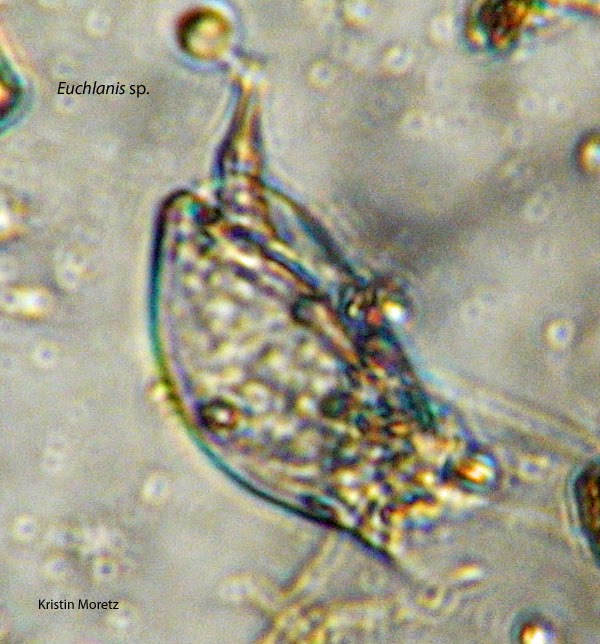This is the last day with my microaquarium. It was sad to finally let it go after over a month of watching it grow. My last observation was bleak, there were far fewer microorganisms in my aquarium this week, but to say there were far fewer doesn't mean there weren't any at all. There were a couple of nematodes that I found quickly moving through the middle and lower surface of the tank. In comparison to past week there were significantly more diatoms in the lower regions of the tank moving slowly and a further increasing number of cyanobacteria throughout the tank.
Image 1. Cyanobacteria
Image 1 shows the cyanobacteria which have been growing larger every week in the micro aquarium. The organism has a spiral shape as shown from the image and obtain there energy from photosynthesis (Forest p. 147).
Image 2. Chaetonotus (Gastrotricha)
Image 2 is taken of a Chaetonotus, which is a species of Gastrotricha that range from 0.1 to 1.5 millimeters long (Pennak p. 165). They are the largest species of Gastrotrich and have spiny cilia surrounding the body and can be quick to move, the organism was found near the bottom of the aquarium with the soil and algae.
Bibliography:
Forest, Herman S. Handbook of Algae. Knoxville: Knoxville, 1954. Print.
Pennak, Robert W. Freshwater Invertebrates of the United States. New York City: John Wiley & Sons, 1978. Print.







